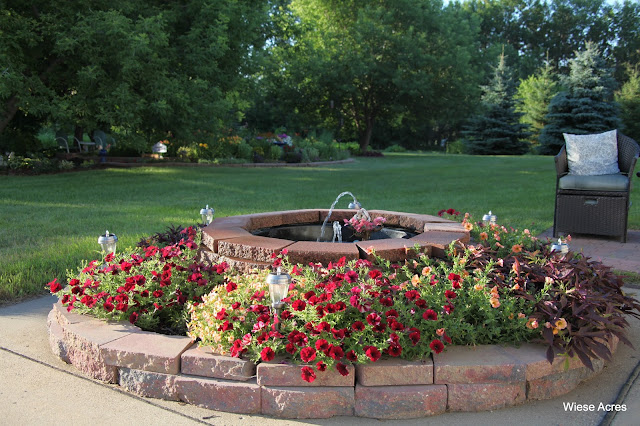 |
| The original Fine Feathered Friends Garden |
As we wind down from the busyness of Christmas, and the days are still far from being noticeably longer, it's easy for the winter doldrums to come visiting. The good thing about winter doldrums, though? I do my best planning for the next season's garden during those long, cold winter evenings. I have one entirely blank canvas to plan for this year.
Last year, I removed all salvageable plants from the Fine Feathered Friends garden. There were two reasons for all that digging. One was that the tree, which was nothing but a sapling when that garden was first planted, has become a nice, large shade tree. I appreciate that shade, but my sun loving plants don't think it's such a great thing. The second reason was that, in spite of my best efforts to eradicate it, the quackgrass (Elytrigia repens) had gotten a strong foot hold in much of the bed. The added shade requires a different kind of planting. The quackgrass required more work.
 |
| Quackgrass plant (internet photo) |
My next step was to take out the glyphosate spray and give anything green left in the Fine Feathered Friends garden a good bath in the herbicide.
I reserve the use of chemicals for only the toughest cases. Trust me - quackgrass fits the bill. It has rhizomatous roots, which will start a new plant from the tiniest sliver of root material. That's how I got the stuff in the garden in the first place. We brought some pulverized black dirt in to enrich the soil a bit. Well, in the pulverizing process, about a million quackgrass roots were spread throughout the entire batch. And every single one of them started in my garden! Digging them all out would have taken years and probably still have been an exercise in futility. So, desperate times call for desperate measures - it was time to put aside my aversion to herbicides and get them to work for me. After the initial glyphosate dose, I watched carefully for the remainder of the summer and sprayed any evidence of new quackgrass growth as quickly as it appeared.
 |
| Quackgrass roots (internet photo) |
In late summer, when I was satisfied that the last piece of quackgrass had met its demise, I spread a one inch layer of peat moss and two inches of composted, sterilized manure over the entire garden. I tilled that in to the existing soil and leveled the garden spot. Then, I recruited my husband to help me lay landscape fabric and a thin layer of cedar mulch over the entire area to keep any stray weed seeds from landing there throughout the fall and winter.
Next spring, I'll rake aside the mulch, lift the landscape fabric and watch for awhile to see if any quackgrass dares to show its face. Quackgrass is a cool season grass, so any growth that might show up will likely begin in early spring. If any of the nasty stuff does grow, I will force myself to be patient with my planting and either dig the offenders out, or use some more glyphosate. If I have to do more spraying, I will have to delay my planting for a couple weeks to make sure no residual herbicide comes into contact with the fragile new plantings.
Then, I will be able to start planting. Before that, though, I will have all the fun of figuring out what plants I want to place where in that space. Many of the plants I put there will come from other gardens at Wiese Acres. Half the fun of planning a new garden space, though, is to seek out new plants or new varieties of old favorites that will work in that space. The seed and plant catalogs have begun arriving, so I'm ready for some fun!
I'll keep you posted as I decide what lovelies will go in that space.




































































